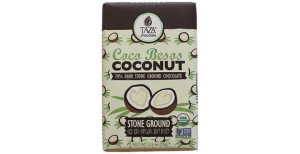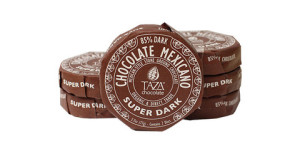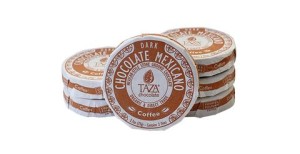
How Sweet It Is: Chocolate & Wine
July 11, 2016You love finding the time to curl up on your beach blanket under your wide brimmed sun hat and reading a good book purchased from your local bookstore. Later in the week, you will enjoy the social aspects of your book club gathering that may discuss your latest read under the sun, but more importantly revolves around the wines you choose to toast and share with each other during such a jolly occasion. Taking it to the next level to create a perfect trifecta would be including another decadence that almost every person (but not absolutely everyone) has a fondness for – chocolate.
On tasting wine & chocolate together: There are a handful of key points to make the most of your chocolate and wine experience. First and foremost, keep an open mind about what it is you are sampling when it comes to the chocolate or the wine. Think about the structure of the chocolate, which includes the texture, consistency and sweetness/bitterness, along with the flavor profile of the wine, such as the fruit, earth and mineral components, when choosing a perfect pairing. The weight and flavors of the wine and chocolate should be similar, not contrasting as in some traditional food and wine pairings. Take a small sip of the wine to coat your palate. Nibble on the chocolate and let it soften in your mouth. Wait a few seconds to let the flavors speak to you and think about the texture of the chocolate as it reaches its melting point in your mouth, then take a small sip of the wine again.
Wines are able to compliment and bring out the unique flavors of chocolate with each sip of wine and bite of chocolate. Here is a quick guide to finding that perfect pairing that will match your wine affinity while taming your chocolate craving. For simplicity sake, all of the chocolate mentioned here is from Taza Chocolate located in Somerville, MA, and available for purchase at Épernay Wine & Spirits. At Taza, they specialize in making stone ground, organic chocolate that is minimally processed in order to enhance the natural bold flavors and textures of the cacao beans.
 Coco Besos Coconut Chocolate – This soft, creamy chocolate with hints of cocoa butter leads itself to a fragrant floral, tropical fruit driven white wine that has low acidity and matches to the texture of the chocolate. A traditional, old-world style Viognier from France, with its fresh apricot and plush flowery bouquet, along with honeyed caramel and hints of vanilla on the smooth, lingering finish, would pair well with the taste of the chocolate. If you prefer a dessert wine, aim for a late-harvest or fortified port-style Viognier, this time a new-world representative from California, Washington or even Australia, that is also low in acid, not too high in alcohol and that will enhance the caramel flavor in the chocolate.
Coco Besos Coconut Chocolate – This soft, creamy chocolate with hints of cocoa butter leads itself to a fragrant floral, tropical fruit driven white wine that has low acidity and matches to the texture of the chocolate. A traditional, old-world style Viognier from France, with its fresh apricot and plush flowery bouquet, along with honeyed caramel and hints of vanilla on the smooth, lingering finish, would pair well with the taste of the chocolate. If you prefer a dessert wine, aim for a late-harvest or fortified port-style Viognier, this time a new-world representative from California, Washington or even Australia, that is also low in acid, not too high in alcohol and that will enhance the caramel flavor in the chocolate.
 Chipotle Chili Dark Chocolate – This spicy chocolate would be completed well by a wine that matches the ‘heat’ on the palate of the generous chocolate that is reminiscent of fiery red pepper chili flakes. Look for a domestic ‘Old Vines’ 100% Zinfandel from a moderate climate, such as Sonoma County, that does not display an aggressive amount of alcohol. Another suggestion would be a wine from Ribera del Duero, a region located north of Madrid in Spain. This region highlights the graceful grape Tempranillo. Look for a wine aged for at least one year in oak, falling into the Crianza aging level. Both of these wines are from thin-skinned grapes that have limited tannins to fight with the lively spiciness of the chocolate, while highlighting the bright red fruit characters that can be found in each wine. Neither of these wines should see a heavy hand of oak and both should be a pure expression of what the grape and terroir have to offer.
Chipotle Chili Dark Chocolate – This spicy chocolate would be completed well by a wine that matches the ‘heat’ on the palate of the generous chocolate that is reminiscent of fiery red pepper chili flakes. Look for a domestic ‘Old Vines’ 100% Zinfandel from a moderate climate, such as Sonoma County, that does not display an aggressive amount of alcohol. Another suggestion would be a wine from Ribera del Duero, a region located north of Madrid in Spain. This region highlights the graceful grape Tempranillo. Look for a wine aged for at least one year in oak, falling into the Crianza aging level. Both of these wines are from thin-skinned grapes that have limited tannins to fight with the lively spiciness of the chocolate, while highlighting the bright red fruit characters that can be found in each wine. Neither of these wines should see a heavy hand of oak and both should be a pure expression of what the grape and terroir have to offer.
 Super Dark Cacao Pure Chocolate – This chocolate calls for a deep, dark wine that is robust, full of dark cherry, blackberry or plum fruit and has a slight peppery finish. Hints of vanilla from a small amount of oak usage without too much tannin or alcohol would lead us to a Malbec or blend from Argentina. The depth of color and character, along with the slight ruggedness of these wines, will complement the terroir-influenced flavors of the chocolate. If you prefer to pair this chocolate with a dessert wine, it would call for a traditional Ruby port. This fortified wine is rich, full-bodied and not as sweet and syrupy as what you might think of for a traditional dessert wine, although it is very high in alcohol. Delicate aromas and flavors of black plums and dark cherries complement the fruit components on the finish of the chocolate.
Super Dark Cacao Pure Chocolate – This chocolate calls for a deep, dark wine that is robust, full of dark cherry, blackberry or plum fruit and has a slight peppery finish. Hints of vanilla from a small amount of oak usage without too much tannin or alcohol would lead us to a Malbec or blend from Argentina. The depth of color and character, along with the slight ruggedness of these wines, will complement the terroir-influenced flavors of the chocolate. If you prefer to pair this chocolate with a dessert wine, it would call for a traditional Ruby port. This fortified wine is rich, full-bodied and not as sweet and syrupy as what you might think of for a traditional dessert wine, although it is very high in alcohol. Delicate aromas and flavors of black plums and dark cherries complement the fruit components on the finish of the chocolate.
 Coffee Dark Chocolate – This chocolate has soft, earthy flavors of mocha and coffee bean that are complex, yet mellow, with a dusty texture on the palate. The richness of Right-Bank Bordeaux that is Merlot based, with a moderate amount of oak aging, would complement well with the complex flavors of the chocolate. On the domestic side of wines, the fascinating earthiness and concentrated fruit flavors of the chocolate that are not too sweet will match the lingering finish of ripe fruit and well-integrated oak of a domestic Merlot or Merlot-based red blend, proving to be seductive, velvety and graceful, yet firm.
Coffee Dark Chocolate – This chocolate has soft, earthy flavors of mocha and coffee bean that are complex, yet mellow, with a dusty texture on the palate. The richness of Right-Bank Bordeaux that is Merlot based, with a moderate amount of oak aging, would complement well with the complex flavors of the chocolate. On the domestic side of wines, the fascinating earthiness and concentrated fruit flavors of the chocolate that are not too sweet will match the lingering finish of ripe fruit and well-integrated oak of a domestic Merlot or Merlot-based red blend, proving to be seductive, velvety and graceful, yet firm.
This proves to be just a beginning and small sampling to the unique, delicious chocolate and wine pairings that await you. Get started on your next novel paired with new wine and chocolate discoveries to create your own flavor combinations. Perhaps someday you might even right an award-winning book about your experience to share with the rest of the wine drinking, chocolate loving world!
Comments